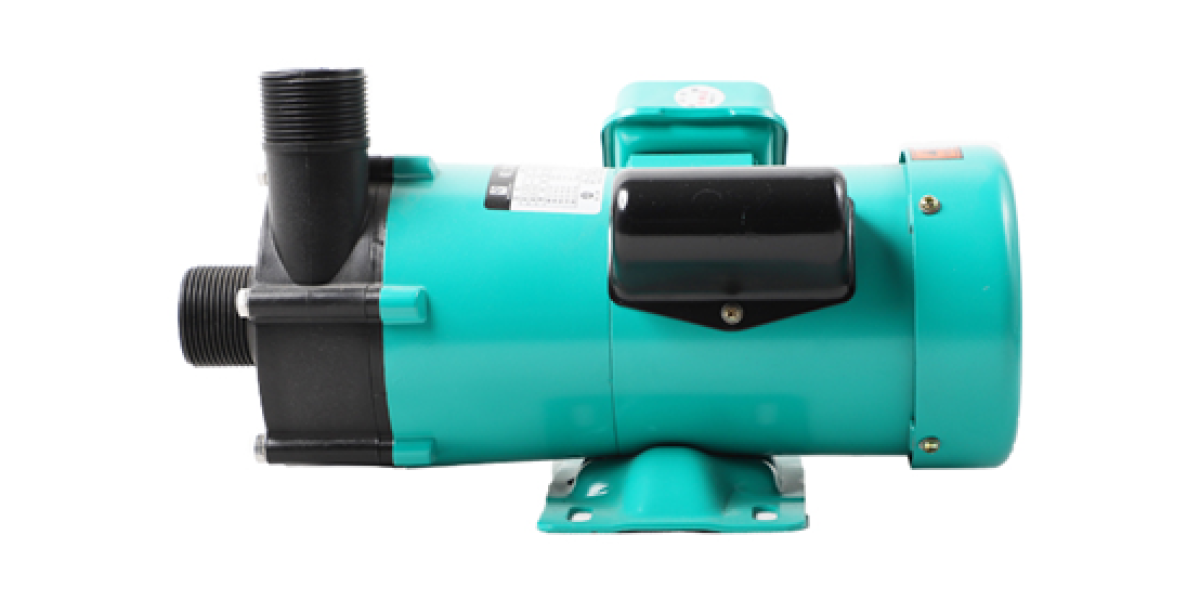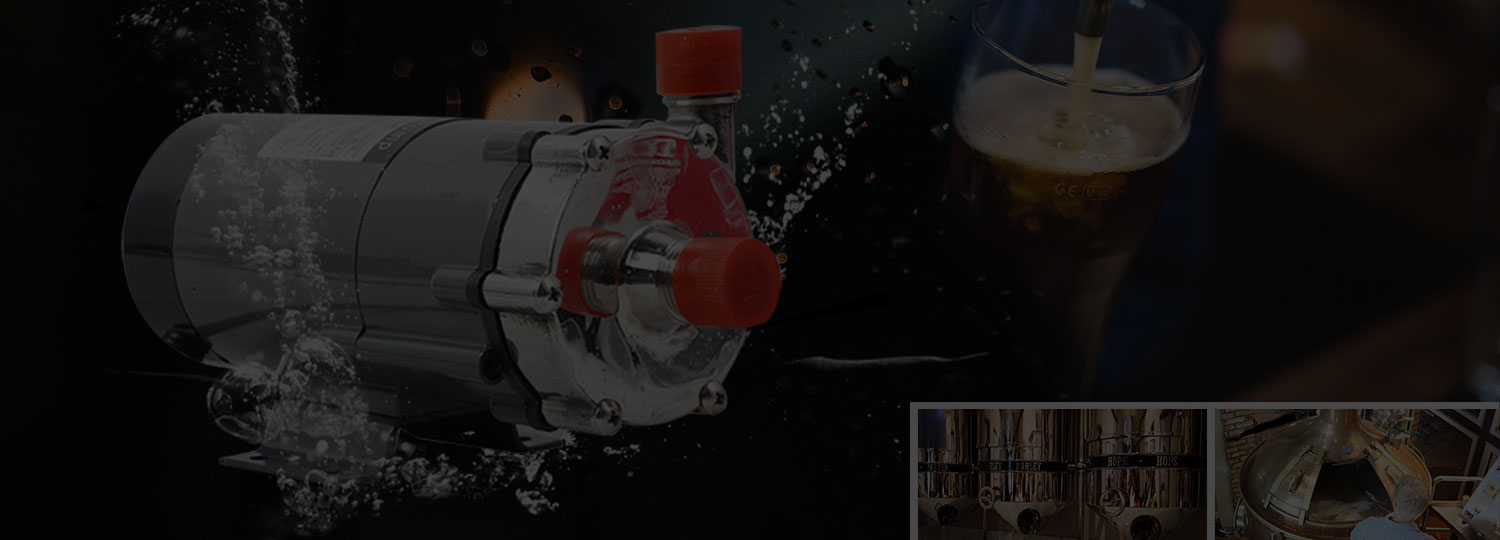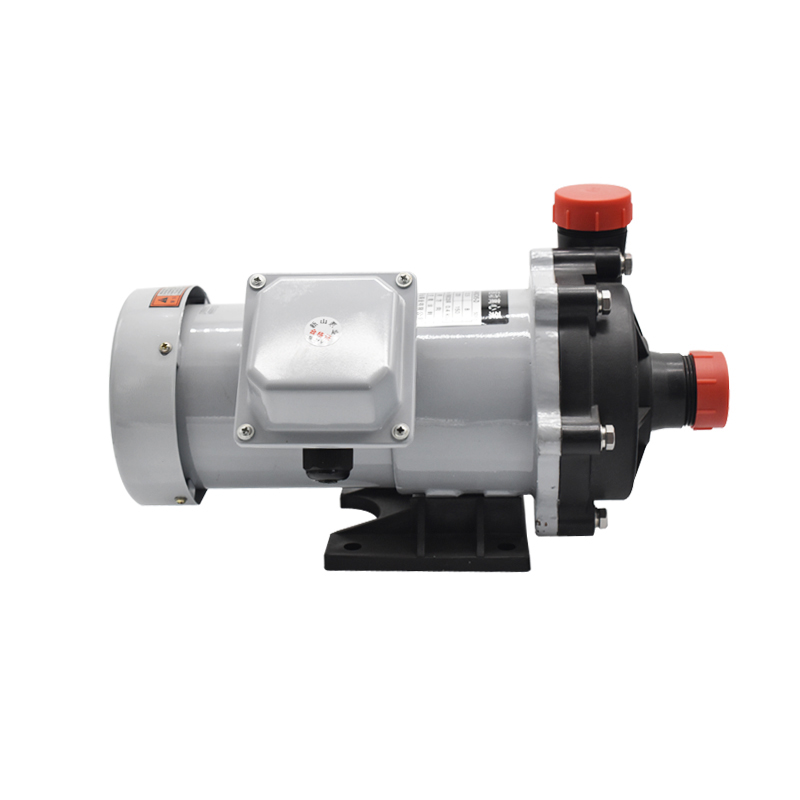How to choose the right magnetic pump?
There are many classifications of magnetic pumps from their use, and it is vital to choose the right magnetic pump according to its use.
Table of Contents
Types of magnetic pumps
A magnetic pump is one of the branches belonging to the field of water pump, also known as a magnetic centrifugal pump. A magnetic pump (magnetic drive pump) is a new product that applies the working principle of permanent magnetic coupling to a centrifugal pump. The magnetic pump is mainly divided into fluorine plastic magnetic pump, stainless steel magnetic pump, corrosion resistant magnetic pump, engineering plastic magnetic pump, self-priming magnetic pump, high-temperature magnetic pump, multi-stage magnetic pump, etc.
Advantages and principles of magnetic pumps
The magnetic pump consists of three parts: pump, motor, and magnetic drive. The key component magnetic drive consists of an outer magnetic rotor, inner magnetic rotor, and non-permeable isolation sleeve. When the motor drives the outer magnetic rotor to rotate, the magnetic field can penetrate the air gap and non-magnetic material and drive the inner magnetic rotor connected with the impeller to make the synchronous rotation to realize the contactless transmission of power and transform the dynamic seal into the static seal. As the pump shaft and inner magnetic rotor are completely closed by the pump body and isolation sleeve, thus completely solving the problem of “running, bubbling, dripping and leaking”, eliminating the hidden danger of flammable, explosive, toxic, and harmful media leaking through the pump seal in the oil refining and chemical industry, and strongly ensuring the health of employees and production safety.
According to the needs of different fields, Our company CLEY PUMP provides a variety of magnetic pump specifications for customers to choose from, the choice of material diversity to meet the deeper needs
1.No magnetic leakage pump no seal wear and replacement problems, compact structure, and easy installation are embedded in the equipment application.
2. In addition to the standard type, there are also high head special types, high flow special types, and threaded connection types, the product model is rich and diverse with greater flexibility in selection.
3. The material is corrosion-resistant and can be selected from GFRPP, PP, CFRPP, and ETFE depending on the liquid to be conveyed. 4.
4. The impeller and the inner magnet are injection molded, high strength, and not easy to damage under high speed and high temperature. 5 The outer magnet is made of rare earth permanent magnet, magnetic solid energy, durable and stable.

The difference between a magnetic pump and a shield pump
Chemical equipment leak-free requirements contributed to the growing development of magnetic pumps and shielded pumps, two kinds of pumps in the chemical, pharmaceutical, nuclear industries, aerospace, and other devices are widely used. In terms of China applications or shielded pumps dominate, mainly because the domestic magnetic steel material technology is not up to par, often leading to magnetic pump demagnetization, heat overload, and other accidents.
At present, the magnetic pump technology is very mature in foreign applications, and thus the magnetic pump market is mainly monopolized by foreign countries, foreign magnetic pump applications account for the mainstream. And shield pumps on material technology mainly anti-corrosion (shielding sleeve) requirements, and other chemical pumps are no different, mainly a special form of shielding motor design. So shielded pumps are commonly used in the country. In addition, the cost of magnetic pumps is higher than shielded pumps is also an important reason for the limited application of domestic magnetic pumps. How to choose specifically? That should be combined with the different points of the two pumps, according to the actual needs of production, comprehensive consideration of the cost to decide: magnetic pumps and shielded pumps in common: are non-leakage pumps, are not any shaft seal. The difference between magnetic pump and shield pump: the structure principle is completely different. The motor of the magnetic pump is an ordinary motor, the motor shaft, and pump shaft are 2 shafts, connected by a common coupling (if the motor is a hollow shaft, the pump shaft is directly inserted into the motor, also known as the direct-connection structure)

The pump shaft is equipped with a cylindrical outer magnet, and the inner surface of the outer magnet is evenly arranged with permanent magnets with NS poles arranged in phase. The rotating parts of the pump (the main rod of the triple screw pump, the impeller shaft of the centrifugal pump) are also equipped with a cylindrical inner magnet, and the outer surface of the inner magnet is also uniformly arranged with NS poles arranged in phase with the permanent magnets. The motor drives the outer magnet to rotate, due to the mutual attraction of the permanent magnets, the outer magnet drives the inner magnet to rotate synchronously (this way also becomes a magnetic coupling), which in turn drives the impeller or active screw to rotate. The inner magnet is in contact with the medium, and an isolation sleeve made of non-magnetic material is added between the inner and outer magnets, and the isolation sleeve is fixed on the pump end cover so that the pumped medium is sealed inside the isolation sleeve in the form of a static seal. Magnetic pumps are mainly used in high-end applications, such as the most ideal choice when conveying harmful media such as strong acids, strong alkalis, liquid chlorine, etc. The pump shaft of the shielded pump shares a common shaft with the motor shaft, and the impeller is mounted on this common shaft. The motor and pump are integrated.

It isolates the rotor and stator inside the motor, the motor rotor and impeller are made on a common shaft, and the rotor rotates with the impeller. Outside the rotor and then make a shield sleeve sealed up, so that the media and rotor contact, is sealed in the shield sleeve inside. Motor stator winding in the outer circumference of the shield sleeve, directly using the principle of the motor to drive the impeller (shielded pump this motor design is a shielded special motor). In simple terms, the shielded pump effect is the same as sealing the pump and motor in the same sealed housing. The difference between a magnetic pump and a shielded pump before: 1, shielded pump directly uses the principle of the motor, while the magnetic pump motor energy is delivered to the impeller through the internal and external magnets (part of the energy is converted into the heat of the magnets), so the shielded pump efficiency than the magnetic pump theoretically higher. 2, from the structure, can be seen, the biggest drawback of the shielded pump is the inability to repair (very difficult), the use of either the pump body or motor Problems, users are unable to repair themselves. And the magnetic pump repair and the ordinary pump are not much different (public: pump housekeeping). Shield pump motor bearing contact with the medium, you can imagine how difficult to ensure its service life. So the shield pump is not only difficult for routine maintenance, but also difficult to repair, and its reliability can not be guaranteed (such as bearing failure can not be predicted, and you can not detect the observation of the failure phenomenon and aura), the shield pump can not be found in the operation of the hidden problems, once the problem is fatal damage. 3, the thickness of the magnetic pump isolation sleeve is more than three times the shield pump, so the seal and reliability are more secure. 4, shield pump motor bearing Lubricated by the medium, its motor does not carry a fan, the heat dissipation of the motor by the internal circulation of the medium to take away the heat. This leads to a higher failure rate of this shielded motor. A magnetic pump motor is an ordinary motor, relying on fan heat dissipation, mature and reliable. But also because of this magnetic pump noise than the shielded pump. 5, the shielded pump structure is more compact and therefore smaller than the size of the magnetic pump to save space. 6, shielded pump without coupling, magnetic pump and motor through the coupling connection, the need for alignment. 7, magnetic pump due to magnetic material problems, the maximum power it can do than the shielded pump is lower, which leads to some high flow and high pressure brought about by the large load on the application of the magnetic pump is limited. 8, magnetic pump. 8, magnetic pump for strong corrosive media than shielded pump applicability is better because its isolation sleeve is thicker (shielded pump shield sleeve do thick will affect the electromagnetic effect of the stator winding and rotor winding). 9, the media containing metal particles (such as iron filings) can not use a magnetic pump, because the ferromagnetic material will be attracted to the magnet, leading to failure. And shielded pumps can handle it. Choose which form of pump, depending on how to evaluate if as long as the purchase cost (initial investment costs) is low, use shielded pumps. If you consider the future use of maintenance costs, it is recommended to use the magnetic pump. In addition, if the corrosiveness is particularly strong, it is also recommended to use magnetic pumps. If it contains particles (especially metal ferromagnetic particles) or a shielded pump. If the process reliability requirements are high, the medium is very dangerous and does not allow leakage, the magnetic pump is safer.




